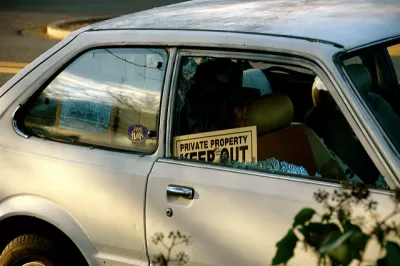The Salinas Valley in California is an agricultural powerhouse, but homelessness and hunger abound. Finding affordable housing is becoming increasingly difficult, even for people with jobs.

Brian Goldstone explores the California housing crisis through the story of a family, parents with three children, living out of their van in Salinas in Monterey County. As the region’s technology workers have moved into this part of the San Francisco Bay Area, housing costs have skyrocketed. "Over the past eight years, there has been a 37 percent loss of low-rent units in the city, while rents have shot up by almost 60 percent since 2014 — roughly four times the national average," he says.
The area’s working poor, including farmworkers employed in the area’s vast agricultural industry, are struggling with stagnant wages, immigration issues, and food insecurity. But housing, by far, is the greatest challenge they face, notes Goldstone. "Families are doubling and tripling up in overcrowded, substandard conditions; they’re resorting to garages and toolsheds, cars and abandoned properties. In Monterey County, approximately 8,000 schoolchildren were homeless last year, more than San Francisco and San Jose combined."
Homeless advocates say the federal counts of homeless people in the county is too low and, as a result, people do not get the resources they need. The family that Goldstone profiles eventually finds permanent housing after nine months of homelessness and living in the van. They are able to access a network of social services, including a program that helps them with the funds they need to rent a house, but the road to housing stability is a long and uncertain one.
FULL STORY: 3 kids. 2 paychecks. No home.

Planetizen Federal Action Tracker
A weekly monitor of how Trump’s orders and actions are impacting planners and planning in America.

Maui's Vacation Rental Debate Turns Ugly
Verbal attacks, misinformation campaigns and fistfights plague a high-stakes debate to convert thousands of vacation rentals into long-term housing.

Cuomo Is the Candidate of Both NIMBYs and Developers. What Gives?
In the New York City mayoral race, odd bedfellows align to preserve the housing status quo.

San Antonio and Austin are Fusing Into one Massive Megaregion
The region spanning the two central Texas cities is growing fast, posing challenges for local infrastructure and water supplies.

Charlottesville Temporarily Has No Zoning Code
A judge ordered the Virginia city to throw out its newly revised zoning code, leaving permitting for new development in legal limbo.

In California Battle of Housing vs. Environment, Housing Just Won
A new state law significantly limits the power of CEQA, an environmental review law that served as a powerful tool for blocking new development.
Urban Design for Planners 1: Software Tools
This six-course series explores essential urban design concepts using open source software and equips planners with the tools they need to participate fully in the urban design process.
Planning for Universal Design
Learn the tools for implementing Universal Design in planning regulations.
Heyer Gruel & Associates PA
JM Goldson LLC
Custer County Colorado
City of Camden Redevelopment Agency
City of Astoria
Transportation Research & Education Center (TREC) at Portland State University
Jefferson Parish Government
Camden Redevelopment Agency
City of Claremont





























